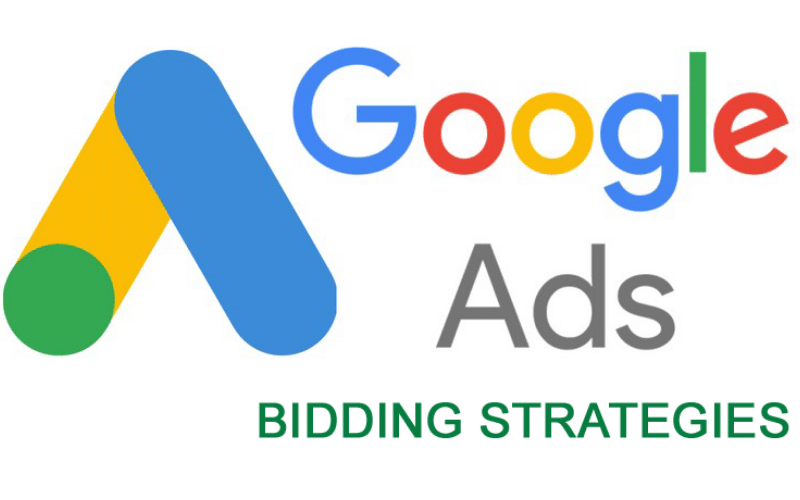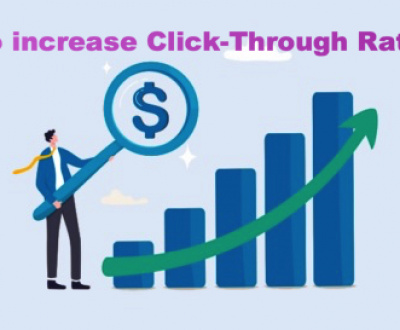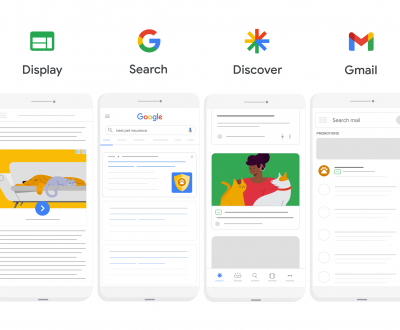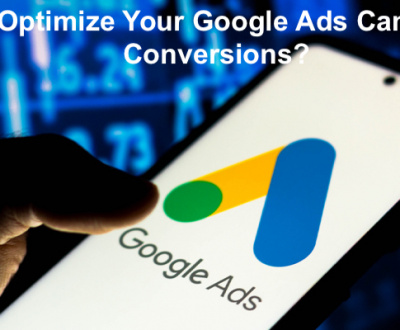Contrary to popular belief, high-performing Google Ads are not just about ‘high bidding.’ Much more surrounds the ‘bid.’ Although clicks, conversions, impressions, and views form the main focus points for most advertisers, new-age advertisers are going a step ahead!
They consider factors like audience conversion intent, bid adjustments, Google Smart bidding, and more to make their bidding strategies more effective. If you are an advertiser or business owner and aren’t fully utilizing the plethora of flexible bidding opportunities presented by Google ads, you are definitely missing out.
With the help of an experienced Google ads specialist, you can gain a competitive advantage in your Google Ads. A Google ads specialist will help choose and optimize Google Ad Bidding strategies focused on your goals.

Google Ads Bidding – How does it work?
Each time an ad space is available on a web page or a search result page, Google runs an ads auction. Although it considers many things for the outcome, the auction is a swift and frequent process.
The bid you place for your Google ads will put you in that auction. Depending on the available bids, a specific ad gets selected and shows up in that space at that point.
But what factors decide the rank of the ads? Let’s have a look.
Essential Elements of Google Ads Auction Ranking
If you think it is all about who is willing to pay the most for their ads, then you’re mistaken. Three main elements compose the ranking of Google ads in an auction.
• The maximum Cost-Per-Click (CPC) bid for a particular keyword
• Ad’s quality score for that keyword
• The ad extensions used and their relevance to the keyword.
Not just this, there are many other factors that Google takes into account from the user’s side too. Some such factors are the user’s geo-location, browsing behavior, device, time of the day, user intent, and audience type.
Types of Bidding
There are two main types of bidding. Manual bidding and Automated bidding (one of its subsets is – Smart Bidding). Both these bidding types have their own sets of pros and cons. Let’s have a look.
- Manual Bidding
With manual bidding, you, yourself, can set the maximum CPC (Cost Per Click) for your keywords. You are charged only when you get a click on your ad and not when someone just views it.
The best part of manual bidding is that you can easily control the maximum amount you wish to pay for every click on your ad. You can also control the keywords you use in your campaign.
One of the downsides of manual bidding is that it can be time-consuming and tricky due to the required amount of research and monitoring. A Google ads specialist can guide you in such scenarios. - Smart Bidding
When the concept of smart bidding was introduced, marketers were not entirely sure about it. But with time, Google kept evolving smart bidding for ease of use and better performance. Today, if you ask any Google ads specialist, they will highly recommend using smart bidding strategies for your Google Ads.
Smart bidding utilizes machine learning in every auction to optimize for conversions or conversion value and is a part of the automated bidding strategies offered by Google.
The best part about smart bidding is finding users who are more likely to convert than an average searcher via machine learning. It provides detailed and transparent performance reports and flexible performance controls that you can use. It offers a vast range of contextual signals as well.
The downsides of smart bidding are that you might lose some control of your budget and might possess lesser visibility and control over the data. Also, Google might reflect a broader audience compared to your target audience. Some bidding strategies in smart bidding require 2x of your average budget to perform well.
Google Ads Bidding Best Practices
So, what will work best when it comes to Google ads bidding? Increasing your bid will increase your conversion volume but also increase your Cost Per Conversion. Similarly, lowering your bid will keep your budget in check but will lower your conversion volume.
Therefore, keeping the right balance between your conversion volume and cost per conversion is essential for the best output.
Let’s look at the best practices for effective Google Ads Bidding.
- Goal-Setting
Set realistic and achievable goals for your ads. You cannot go right with all metrics at the same time. Sometimes, you might have to sacrifice smaller metrics to hit the bigger ones right.
After determining your goals, select a bidding strategy to help you achieve them. For example, if you’re a new brand and want to increase brand awareness, you can focus on a bidding strategy that fetches impressions rather than clicks. - Implement A/B testing
It would be an excellent idea to A/B test your bidding strategy. Use Google’s draft and experiments feature for the same. - Verify attribution model and conversion tracking.
Ensure that your attribution model and conversion tracking are audited and correct. - Performance Evaluation
Keep evaluating the performance of your ads for the best results. - Simplify Account Structure
Keep your account structure simple and easy to use. This will help you adjust your bids based on new strategies and findings. - Don’t overdo bid adjustments
Making bid adjustments too frequently will also harm your progress. It would be more apt to wait for enough data to change or decide on a new strategy.
Bid Options according to Your Goals
As mentioned earlier, Google provides flexibility and options to advertisers for bidding. Depending on your goals, you can select which bid option you must utilize. Hiring a Google ads specialist can also help you select the best option as per your goals.
- Manual Cost Per Click
You can set your bids at the ad group or keyword level with manual CPC. Setting bids at the keyword level gives you maximum control of your bids. Another advantage is that you will sometimes be charged at your CPC but often lower than that.
The drawback of this bid type is that you need a lot of experience and time to get good results. It also gives less detailed reports than automated bidding as it doesn’t utilize Google’s machine learning algorithm.
However, this is the most recommended bidding strategy for new advertisers by Google ads specialists, as you can keep an eye on the spend and performance efficiently. - Automatic Cost Per Click
In this strategy, Google has the liberty to adjust your bids within your daily budget. Best for gathering data, this strategy is the fastest way to launch new campaigns.
The disadvantage of using this strategy is that it does not allow you to control CPC bids at the individual keyword level and allows Google to bid at will (which could be very high or very low) - Enhanced Cost Per Click (eCPC)
With eCPC, Google gets the liberty to increase or decrease your bids by 30%. According to their historical data, if they predict that a conversion is likely to happen, they increase the bid and vice versa. This is an effective strategy to increase click-through rates and conversion rates while reaching a broader audience.
The drawback of eCPC is that you might see an increase in the CPC and might end up spending more than your budget sometimes. Also, note that eCPC is not a separate automated bidding strategy. It works in tandem with manual bidding by adjusting your manual bids. - Target Cost Per Action (tCPA)
Target CPA, CPA bidding, or the conversion optimizer serves as the best bidding option for achieving maximum conversions at a target cost set by you. If your primary goal is to increase your conversions and leads, this bid option is for you.
The limitation of tCPA is that it cannot be used for shopping campaigns. It does not permit separate bids for search network advertising and display network. It also requires a healthy budget to perform well. - Target Return on Ad Spend (tROAS)
If you have a specific ROI that you wish to achieve, then tROAS is the technique for you. Target ROAS is an effective bidding strategy only if you are comfortable spending up to double your average daily budget. This bidding strategy is most suitable for eCommerce campaigns with fewer budget limitations. If your primary focus is to increase your profit, you can use this strategy.
The downside of this strategy is that Google requires you to input crucial information like the product revenue to deduce which keywords will be most profitable.
- Cost Per Thousand Bidding (CPM Bidding)
This bidding strategy is available only for Display Networks and YouTube campaigns. It allows you to set target bids that get accumulated after 1000 impressions. The most distinct fact of CPM bidding is that it charges for impressions and not clicks. It is ideal for raising brand awareness.
The downside of this strategy is that you will be charged for an impression even if your ad is displayed below the fold and the user doesn’t see it. Another disadvantage is ROI on CPM can be lower on low trafficked sites, whereas high trafficked sites might cause you to spend without being actually ‘seen.’
- Maximize Clicks
‘Maximise clicks’ is an automated bidding strategy with which your ads can get the maximum number of clicks possible with your budget.
This bidding strategy is best if you already have a strong conversion performance but want to improve your volume. You can also increase clicks to your website with this option. It is the best strategy for traffic generation.
The drawback of this strategy is that sometimes the clicks tend to be of a lower quality, thus resulting in poor conversions. - Maximize Conversions
With the ‘Maximise Conversions’ bidding option, Google automatically sets your bid to get you maximum conversions while staying within your budget. If you plan to spend your entire budget in a single day, this bid option works best. - Maximize Conversion Value
Google sets your bid to achieve the maximum conversion value within your budget in this strategy. Google finds the most optimal CPC bid for each auction using information such as location, device, demographics, query, and more. - Target Outranking Share
Are you trying to outrank a specific competitor? Use the target outranking strategy to meet your performance goals. You can enter your competitor’s domain name and tell Google how often you want your bid to outrank theirs. The benefits of this strategy include increasing search visibility over the competitor’s and capturing market share from your competitor. The only downside of this strategy is that it can be expensive, especially if your competitor has a better-quality score. - Target Impression Share
Best for increasing brand awareness, this bidding option sets your bids to increase the chances of your ad appearing on the search page are selected by you. It helps you achieve your Impression share goal by displaying your ads either on top of the page, absolute top of the page, or anywhere on the page of Google search.
This strategy uses the max CPC limit as the cap on its bids. The only drawback of this strategy is that it doesn’t necessarily fetch you conversions. - Portfolio Bid Strategies
PBS is an automated, goal-oriented strategy that helps you manage multiple campaigns, ad groups, and keywords. With the help of this, your bids automatically get set to reach your performance goals.
The best part of this strategy is that you will not be at the risk of overspending on a single click because you can set a max CPC. It also encourages a lower CPC and, in turn, a lower CPA. A downside of this strategy is that your impression share will drop as you remove yourself from the most expensive auctions.
Conclusion
By now, you know that bidding is not just about who the highest bidder is. Businesses can use a plethora of Google Ads bidding strategies to make their ads effective, even on low budgets!
Creating and running an effective ad campaign might seem simple, but sometimes it can be too overwhelming. An experienced Google ads specialist can help you with the latest and best Google Ads bidding strategy and catapult your business towards success.
Media Challengers, led by Birendra Kumar, is the foremost SEO and PPC services company, specializing in implementing a comprehensive range of online marketing techniques to enhance business profitability. As a Google certified agency partner, we bring expertise in SEO (Search Engine Optimization) and PPC (Pay-Per-Click) strategies to drive successful digital campaigns.
Do you want an instant result and traffic?
You are at the right place, we are committed for instant result (Call, Query Form, Traffic, view, etc..) generation. If you have any questions please let me know.
Our last month campaign performance

Recent Posts
- How to set up Performance Max campaign? April 7, 2024
- The Importance of Keyword Research in Google Ads Campaigns February 25, 2024
- Maximizing ROI with Google Ads Budget Management 2024 December 21, 2023











